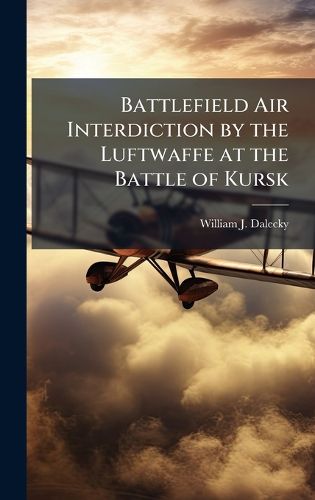Readings Newsletter
Become a Readings Member to make your shopping experience even easier.
Sign in or sign up for free!
You’re not far away from qualifying for FREE standard shipping within Australia
You’ve qualified for FREE standard shipping within Australia
The cart is loading…






This title is printed to order. This book may have been self-published. If so, we cannot guarantee the quality of the content. In the main most books will have gone through the editing process however some may not. We therefore suggest that you be aware of this before ordering this book. If in doubt check either the author or publisher’s details as we are unable to accept any returns unless they are faulty. Please contact us if you have any questions.
This study attempts to show the misapplication of tactical airpower by the Luftwaffe in support of German ground forces during the Battle of Kursk in July 1943. The analysis is based on the investigation of historical references and provides lessons learned which might be applied in future conflicts. The study shows that the Luftwaffe concentrated its efforts at Kursk on Close Air Support and neglected Battlefield Air Interdiction. This was primarily because Close Air Support had proven itself so successful in German experience prior to Kursk. However, the failure of the Luftwaffe to interdict Russian reinforcements at Kursk proved to be critical and contributed to the German defeat. Air planners must realize that a correct balance between Close Air Support and Battlefield Air Interdiction is essential to the efficient use of airpower during any tactical application in support of ground forces. Neither Close Air Support nor Battlefield Air Interdiction should gain primacy in doctrine, rather, a mix of the two should be applied on a situational basis.
This work has been selected by scholars as being culturally important, and is part of the knowledge base of civilization as we know it. This work was reproduced from the original artifact, and remains as true to the original work as possible. Therefore, you will see the original copyright references, library stamps (as most of these works have been housed in our most important libraries around the world), and other notations in the work.
This work is in the public domain in the United States of America, and possibly other nations. Within the United States, you may freely copy and distribute this work, as no entity (individual or corporate) has a copyright on the body of the work.
As a reproduction of a historical artifact, this work may contain missing or blurred pages, poor pictures, errant marks, etc. Scholars believe, and we concur, that this work is important enough to be preserved, reproduced, and made generally available to the public. We appreciate your support of the preservation process, and thank you for being an important part of keeping this knowledge alive and relevant.
$9.00 standard shipping within Australia
FREE standard shipping within Australia for orders over $100.00
Express & International shipping calculated at checkout
This title is printed to order. This book may have been self-published. If so, we cannot guarantee the quality of the content. In the main most books will have gone through the editing process however some may not. We therefore suggest that you be aware of this before ordering this book. If in doubt check either the author or publisher’s details as we are unable to accept any returns unless they are faulty. Please contact us if you have any questions.
This study attempts to show the misapplication of tactical airpower by the Luftwaffe in support of German ground forces during the Battle of Kursk in July 1943. The analysis is based on the investigation of historical references and provides lessons learned which might be applied in future conflicts. The study shows that the Luftwaffe concentrated its efforts at Kursk on Close Air Support and neglected Battlefield Air Interdiction. This was primarily because Close Air Support had proven itself so successful in German experience prior to Kursk. However, the failure of the Luftwaffe to interdict Russian reinforcements at Kursk proved to be critical and contributed to the German defeat. Air planners must realize that a correct balance between Close Air Support and Battlefield Air Interdiction is essential to the efficient use of airpower during any tactical application in support of ground forces. Neither Close Air Support nor Battlefield Air Interdiction should gain primacy in doctrine, rather, a mix of the two should be applied on a situational basis.
This work has been selected by scholars as being culturally important, and is part of the knowledge base of civilization as we know it. This work was reproduced from the original artifact, and remains as true to the original work as possible. Therefore, you will see the original copyright references, library stamps (as most of these works have been housed in our most important libraries around the world), and other notations in the work.
This work is in the public domain in the United States of America, and possibly other nations. Within the United States, you may freely copy and distribute this work, as no entity (individual or corporate) has a copyright on the body of the work.
As a reproduction of a historical artifact, this work may contain missing or blurred pages, poor pictures, errant marks, etc. Scholars believe, and we concur, that this work is important enough to be preserved, reproduced, and made generally available to the public. We appreciate your support of the preservation process, and thank you for being an important part of keeping this knowledge alive and relevant.